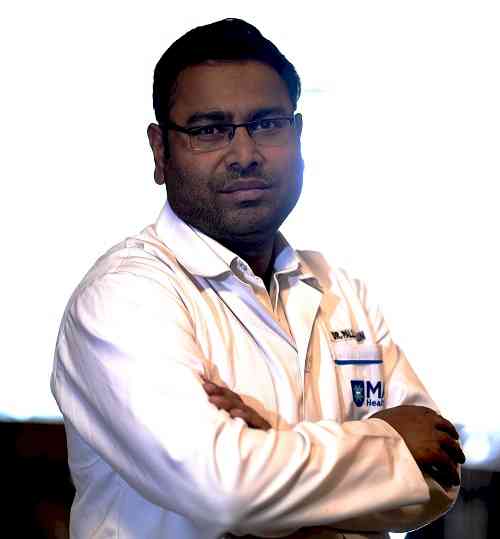Solar Rooftop: Tapping the vast potential to meet 100 GW target
Recent studies by international research agencies declared India to be cheapest solar market of world

By Puneet Goyal
India has almost reached 10% installed capacity with renewables in November 2019. Solar power has reached grid parity and is the cheapest source of distributed power across the world. While evacuation, policy and installation quality are some of the common problems plaguing the Indian solar push, the 100 GW target is not far. The centre has been upward revising renewable targets every few years. Major research agencies have also deeply underestimated the renewable capacity addition over the last 10 years. India has still not realised its potential for renewable energy addition fully.
The major stakeholders in the solar sector – Consumers, system integrators, suppliers and financing institutions – have all risen up to the opportunity. The consumer is becoming increasingly aware and can easily connect the dots in a previously ambiguous topic.
Utility scale solar plants have been the low hanging juicy fruits for investors and policy makers but distributed generation is the clear way forward. Solar as a technology is ideally adapted to the distributed concept. Add storage to this topic and we have a robust solution which will be unchallenged for a few decades. The transport sector is being revolutionised in parallel with electric vehicles (EV’s) being deployed at a fast pace. EV’s are a natural partner of distributed solar.
Solar industry experts constantly encounter a disconnect between policy and technology.
If that was not enough, the DISCOM’s are not receptive to change (barring a few states). Some changes, like the recent notification on making the AC capacity of a solar power plant as the primary capacity metric, is a welcome one. The renewable voice is growing louder among all stakeholders. DISCOMS have the additional advantage of using their distribution transformer capacities more efficiently by enabling small scale distributed power producers. DISCOMS have to become an active player in helping to deploy distributed solar. India has one of the highest power transmission and distribution loss metrics in the world. Distributed generation solves this issues with the common point of generation and consumption.
Many state governments have taken a short sighted view and are facing a ‘buyer’s remorse’ in a falling capex market. This has led to investors being harassed for renegotiation. The control over historical contracts needs s desperate improvement for this growth to sustain.
India also needs to move from a power producer to a raw material producer. The manufacturing capacity of all solar system components has not grown and India is a laggard in this matter. Though improvements have been going on over the last 2-3 years, China’s prowess has been unmatchable in this regard.
Solar and subsidy have been going hand in hand since the very beginning due to the high initial costs. Today, unsubsidised solar has reached grid parity or dare I say, become a no brainer for industries to adopt as a long term low risk investment with a cushion against rising electricity costs. Capital subsidies are no longer needed in the industry and the subsidies, if any, should be higher in the value chain like manufacturing.
Uneven and constantly changing state policies have created confusion in a market which is already technologically unclear in a consumers mind leading to a rampant decision paralysis. System integrators have to bear the brunt of this since their sales lead cycled and business development costs skyrocket. A single centrally controlled policy will immensely help the industry.
Insufficient land or roof area are another issue which every consumer faces. Improvement in plant efficiencies over the last 10 years have been significant in ensuring that the kWh generated per square feet keep improving. When we started with installing Thin Film Modules of 100 Wp each, they were state of the art. We have come a long way today with 400 Wp becoming the new normal now. This is direct 4x jump on the land use efficiency in 10 years. With commercially viable bi-facial technologies around the corner, this number will jump to 500 Wp within 12-18 months. A higher Wp per Square foot has an added advantage of reduced Balance of System costs.
Emerging technologies like storage have to be adopted early in India and manufacturing for the same has to be started early. Battery storage needs another few books to be given justice. The next revolution in renewables will be in the storage segment and by 2022 storage is slated to be the enabler for the next 100 GW of renewables in India. Distributed generation and storage will change the way people depend on the grid for their everyday power needs. Energy independence will become a new norm. The next stage is research and Development on the system components so that India always stays ahead of the curve and is not merely a reactionary market.
Potential in any industry is directly correlated with the population of the region. India’s young and energetic population will adapt to and digest this new technology in no time.
Recent studies by international research agencies have declared India to be the cheapest solar market of the world. We hope this does not lead to India being perceived as the lowest quality market in the world. The transition from a cool to prudent technology has been great till now. Its time to make this from prudent to dependable over the next 5 years.
(Puneet Goyal is Co-Founder, SunAlpha Energy Pvt. Ltd.)


 cityairnews
cityairnews 






